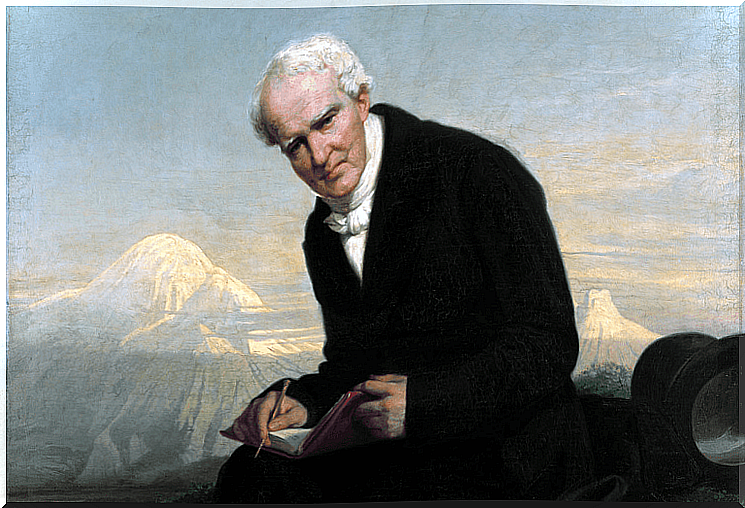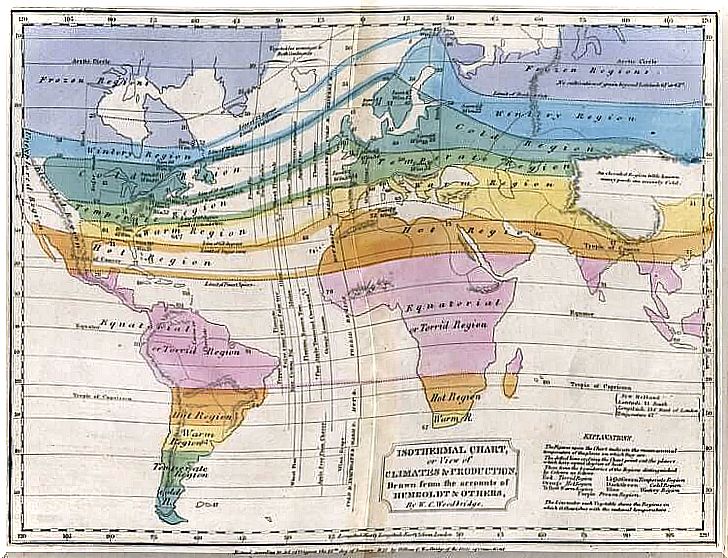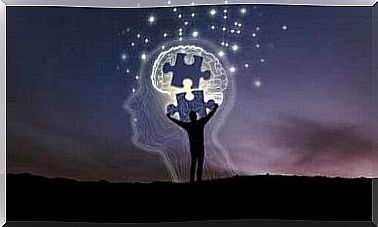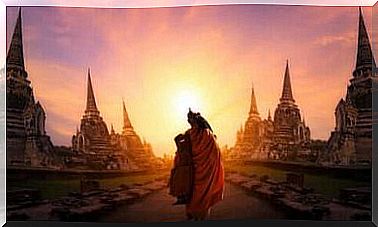Humboldt, A Limitless Explorer

Humboldt was a very important person in modern science. For researchers of diverse and varied fields, Humboldt is the last great scholar, just like other great scholars of history like Leonardo da Vinci, for example.
Alexander von Humboldt was a scientist of Prussian origin (present-day Germany). This scientist has mainly devoted his life to geology and biology.
His scientific findings have led to incredible discoveries. Atmospheric and magnetic measurements made during his travels have allowed other scientists to discover the Earth’s magnetic field.
Humboldt was also a staunch conservationist. One of his biggest concerns was that humans end natural life through deforestation. How could a scientist who lived nearly 200 years ago foresee this problem that we know today?

Humboldt, a born explorer
Alexander von Humboldt was born in 1769. Of a restless and curious nature, and thirsty for knowledge, he spent much of his childhood exploring the gardens and wildlife on his property. Very young, he collects plants to study them meticulously and adopts animals.
Humboldt and his brother Wilhelm study at home under the supervision of several tutors. Their mother, a religious and strict woman, believes that her children should devote their lives to public life. The Humboldt brothers therefore studied mathematics and literature, a fact common at the time. They also study political history and economics.
Unfortunately for his mother, Humboldt lacks discipline; it does not adapt well to traditional studies. He tries several times to study at different universities, but each time he gives up before the end of the first year. After several attempts, an incredible opportunity presents itself … He has the opportunity to study geology while being responsible for supervising the work in a mine.
Alexander von Humboldt’s future will not be limited to copper mines, but at this point he is still far from knowing what will happen to him.

Alexander von Humboldt’s Great American Crossing
After 5 successful years, Humboldt sets out on a journey with a good friend of his, Aimé Bonpland. This trip will be the biggest exploration on South American territory. But how did Humboldt’s great crossing begin?
In 1799, Alexander von Humboldt convinced King Carlos IV of Spain to grant him a permit in order to be able to undertake a trip to the colonies. The first stop is supposed to be Havana. Unfortunately, an outbreak of typhoid fever is forcing travelers to change direction. The new destination will be Venezuela.
Humboltd is, so far, one of the most important cartographers of the Venezuelan territory. Alongside Bonpland and his traveling companions, he will explore the caves, marshes and wilderness areas of the country.
Humboldt’s study of Latin America is undoubtedly one of his successes that gave rise to his notoriety. The purpose of this trip was to “discover” the continent. Maps, astronomical observation, and magnetic and climatic measurements were also part of the research.
After Venezuela and after a brief stay in Cuba, Humboldt begins a long walk along the Andes mountain range. It is during this long walk which will last several years that he draws one of his most important conclusions: nature is interconnected.
Following his explorations, Humboldt concludes that nature is continually in interaction. Animals depend on plants and other animals. The climate depends on flora and fauna, just as the latter depend on the climate. Alexander von Humboldt is, in a way, the first environmentalist.
Back in europe
Back in Europe, Humboldt moved to Paris, the city in which he lived for more than twenty years. In Paris, he devotes himself to the compilation and publication of the results obtained during his research. Although he collected all his results during his stay in Latin America, it was in Paris that he studied and deepened them.
Humboldt will publish numerous articles and books to present his findings. Thanks to his descriptions of flora and fauna, he became an emblematic figure for the science of the time. He will then join various academies and select groups of scientists (biologists, geologists, botanists, etc.).
While in Paris, Humboldt also sponsored young scientists. He wishes to sponsor young people with potential in the field of science who do not have sufficient economic resources. Nevertheless, Humboldt’s economic situation is not ideal either, as he has invested everything in his projects.
At the age of 56, Humboltd ran out of money. He was therefore obliged to return to Berlin where, having no other choice, he gave lessons to the heirs of the royal house of Prussia.
Humboltd will spend the last thirty years of his life in Berlin teaching and lecturing. It is also in Berlin that he will write a good part of an encyclopedia entitled Kosmos in which he will gather all his research.
The legacy of genius
Alexander von Humboldt was one of the greatest modern scientists. His research constituted a significant advance in certain fields, notably in geology and physics.
Thanks to his studies, scientists were able to discover the Earth’s magnetic field and solar storms. His studies also provided a better understanding of geology and volcanoes. They have also deeply inspired some authors such as Charles Darwin, a great biologist and geneticist.
Perhaps one of his most significant contributions to modern science is his deep concern for the environment. At a time when much of nature was untouched, this scientist was able to see the importance of nature in human life.
In his work, he put forward the fact that all natural elements are vital for a balanced planetary life. This is why he warned about the importance of preserving natural spaces. Human life depends on the environment; modern education must teach us to preserve it. It’s an incredibly valuable lesson in the modern world.
Unfortunately, right now we have to deal with climate change, plastic issues and the waste we generate. For centuries, Man has not been able to take care of the planet, probably thinking that the Earth is inexhaustible and eternal. This idea, which has been demystified several times, does not seem to have sufficiently impacted the population.
It is amazing how many years ago someone understood how essential it was to respect the Earth and see it as the home of all species. Humboldt was ahead of his time. He understood well that it was necessary to take care of the planet by watching over its fauna, its flora and all its natural spaces.










